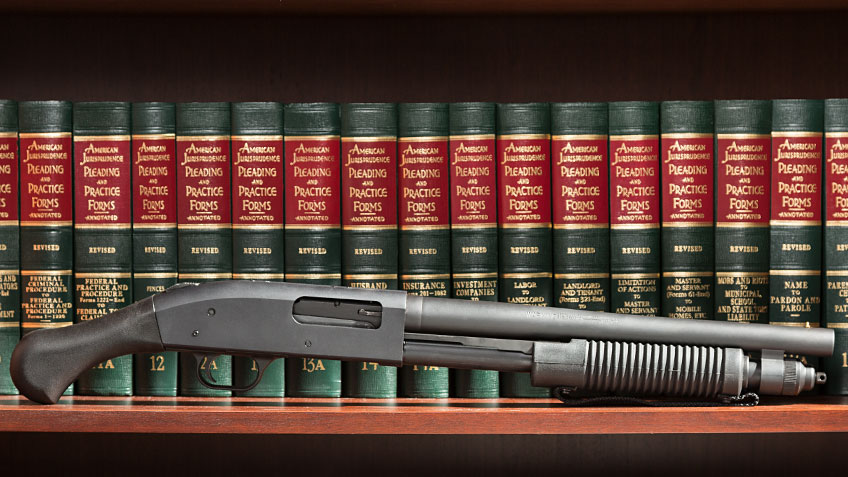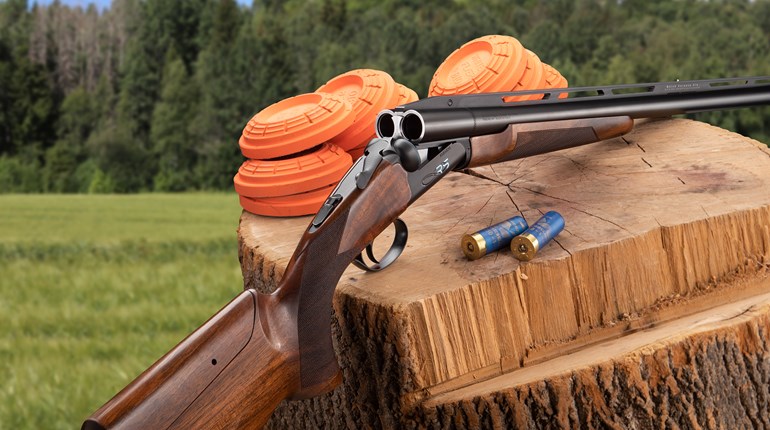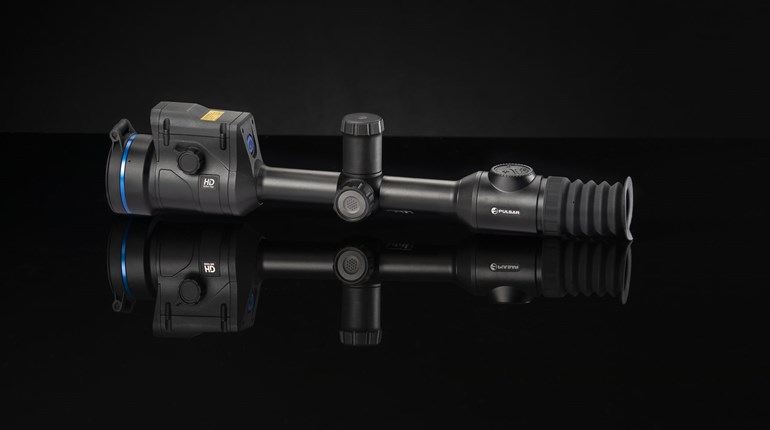
We all desire to stay on the right side of the law, but we also know that navigating U.S. gun laws without help is like finding your way through a shopping mall: Treacherous and no fun at all. Unfortunately, attorneys rarely comment without money for copious research, and gun companies don’t like to say much for fear of liability. Adding to the National Firearms Act’s (NFA) jargon are subjective, case-by-case rulings by ATF officials concerning what constitutes “sporting purposes.” Nonetheless, Shooting Illustrated will attempt to steer you in the right direction on shotguns. Continue at your own legal risk, and keep in mind that state and local laws may be stricter than the federal NFA rules that are the focus of this article.
In general, persons lawfully residing in the U.S. who are 18 years of age or older and in good legal standing may purchase a shotgun from a federally licensed dealer in their home state. Shotguns may also be bought and sold between private individuals residing in the same state. Interstate sales are more limited. If by a licensed dealer, the sale must occur in a face-to-face transaction and comply with the laws of both the state in which the dealer’s business is located and the purchaser’s state of residence. Private interstate sales must always be processed through a licensed dealer in the recipient’s home state.
Trouble is, just because a firearm fires a shotshell does not necessarily make it a shotgun. For that, we have the ATF’s legal definitions of various, shotgun-like firearms.
According to the ATF, a shotgun is: “… a weapon designed or redesigned, made or remade, and intended to be fired from the shoulder and designed or redesigned and made or remade to use the energy of the explosive in a fixed shotgun shell to fire through a smoothbore either a number of projectiles (ball shot) or a single projectile for each pull of the trigger. A shotgun is a firearm subject to the NFA if the shotgun has a barrel or barrels of less than 18 inches in length or is less than 26 inches in overall length.” The vast majority of shotguns made and sold in the U.S. have barrels 18 inches or longer and are greater than 26 inches in overall length, and determined to have been made “for sporting purposes” and therefore are not subject to additional NFA restrictions.
Short-Barreled Shotgun (SBS): “Shotguns having a barrel or barrels of less than 18 inches in length.” SBSs require a $200 NFA tax stamp and special paperwork and approval to transfer.
Weapon Made from a Shotgun: “Overall length of less than 26 inches or a barrel or barrels of less than 18 inches in length. Both stock and barrel altered.” Requires $200 tax stamp and paperwork to transfer; It should be noted that a person cannot make one of these firearms without permission from the ATF.
Any Other Weapon (AOW): “Any weapon or device capable of being concealed on the person from which a shot can be discharged through the energy of an explosive, a pistol or revolver having a barrel with a smoothbore designed or redesigned to fire a fixed shotgun shell, weapons with combination shotgun and rifle barrels 12 inches or more, less than 18 inches in length, from which only a single discharge can be made from either barrel without manual reloading, and shall include any such weapon which may be readily restored to fire. Such term shall not include a pistol or a revolver having a rifled bore, or rifled bores, or weapons designed, made, or intended to be fired from the shoulder and not capable of firing fixed ammunition.”
Any Other Weapons, basically, means any short-barreled, smoothbore guns that were originally manufactured to be fired from one hand (and not from the shoulder) as well as some fairly exotic weapons that combine rifle and shotgun barrels in a compact design. Examples include Marbles’ Game Getter and Serbu’s Super-Shorty. A $200 NFA tax stamp to manufacture, plus a $5 NFA tax stamp, along with paperwork, to transfer.
Destructive Devices: [Include] shotguns with a bore of more than .5 inch in diameter which are not generally recognized as particularly suitable for sporting purposes.” Examples deemed destructive devices by the ATF are the Street Sweeper, SPAS-12 and others. These guns are illegal to own unless they were registered during the ATF’s now-expired grace period.
12-gauge Crude Manufacture: “Barrel less than 18 inches and/or overall length less than 26 inches, stock altered, barrel cut down. Often mistakenly called a ‘sawed-off shotgun.’ In this instance, overall length is the determining factor. However, if the overall length is 26 inches or more and barrel less than 18 inches, this weapon would still be classified as a firearm under the [NFA].” They require a $200 NFA tax stamp to transfer.
It is within these parameters where manufacturers like Mossberg with its new Shockwave, Remington with its Model 870 Tac-14 and others such as Black Aces Tactical Short Barrel DT can offer shot-shell firing “firearms” that utilize 14-inch barrels and are at least 26 inches long without necessitating an NFA tax stamp to transfer.
Perhaps Black Aces Tactical, on its Facebook video post, explained it best: [The Short Barrel DT] never had a stock, so it will not be a short-barrel shotgun … so it will never be an NFA item. It’s not an AOW because it’s over 26-inches long. And since it has a forward grip required by its design to function, it cannot be a pistol. Thus, if it’s not a SBS, not a AOW and not a pistol, it can only be a “firearm,” and a firearm can be transferred to qualifying individuals in most states with a standard 4473 and background check.”
Keep in mind, however, that according to the ATF’s letter to Mossberg, the Shockwave’s (and similar guns’) definition could change depending on the manner in which the gun is used. “Please note,” writes the ATF, “that if the subject firearm is concealed on a person, the classification with regard to the NFA may change.”
So, how are you doing? Got it? Well, it becomes even more complicated when dealing with imported firearms. If you wish to swap a higher-capacity magazine for your imported shotgun’s five-rounder while remaining 922(r) compliant, generally you can do so provided the magazine is American-made and the gun contains no more than 10 imported parts.
As far as compliance, “A shotgun with a telescoping stock or a magazine greater than five rounds is prohibited from importation into the United States under the provisions of section 925(d)(3) of Title 18, United states code (U.S.C.). Assembly of such a shotgun from imported parts is prohibited under 18, U.S.C. Section 922(r). The implementing regulations in Title 27 … prohibit assembly of such a shotgun that contains more than 10 of the imported parts listed in paragraph (c) of the regulation. Assembly of such a shotgun using 10 or less of the listed import parts is not prohibited. The shotgun is also subject to whatever state laws and local ordinances may apply.”
As of 2017, eight states and Washington, DC, have “high-capacity” magazine restrictions. These include: CA, CO, CT, HI, MD, MA, NJ and NY. Other states have other restrictions. For example, at the time of this writing, Mossberg’s Shockwave is a short-barreled rifle in Texas. But, a Mossberg rep says Texas will amend its laws to be consistent with federal law soon.
Shotguns are wonderful tools for sport and defense. Just know the law before acquiring or selling them.




































